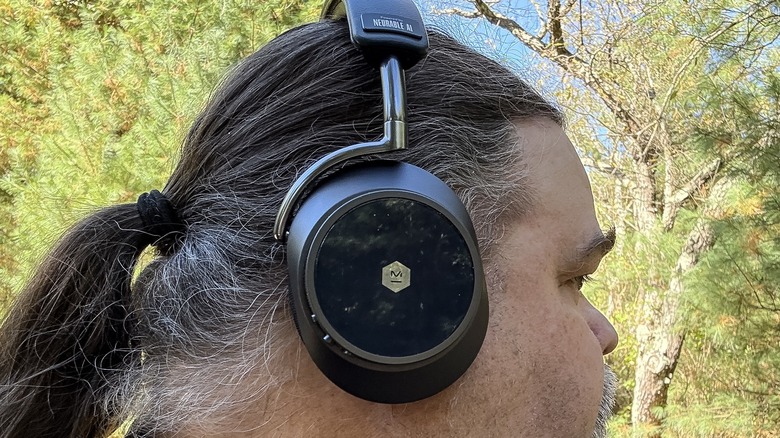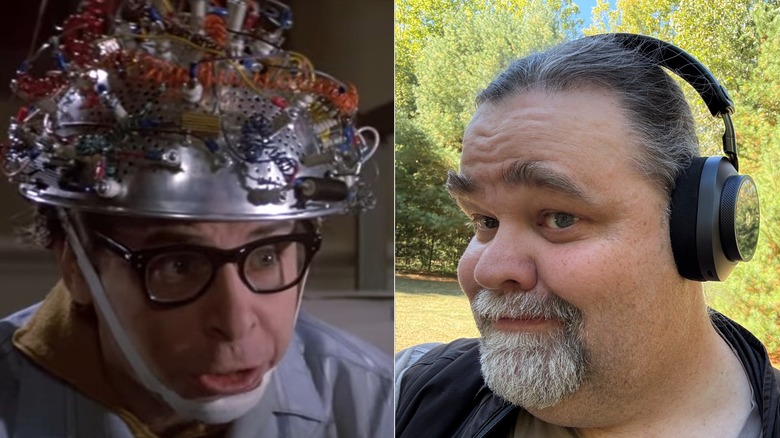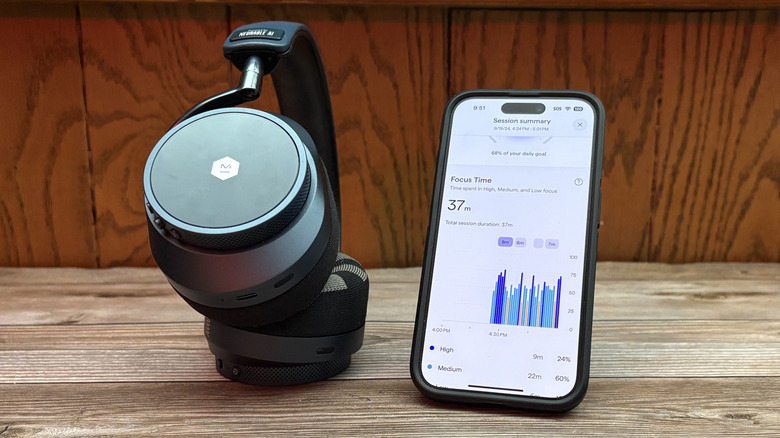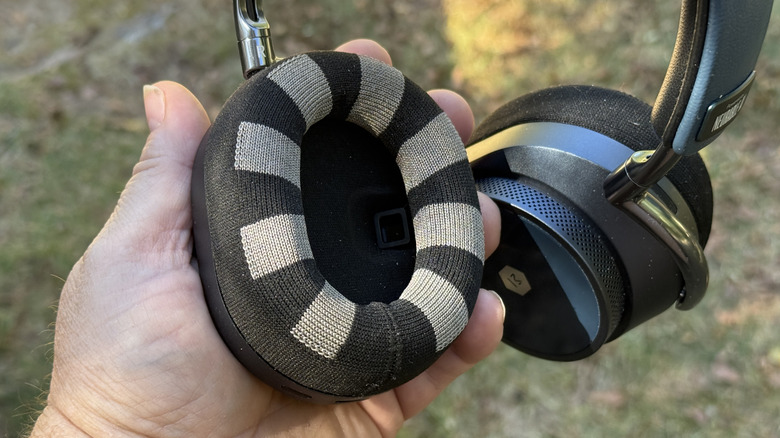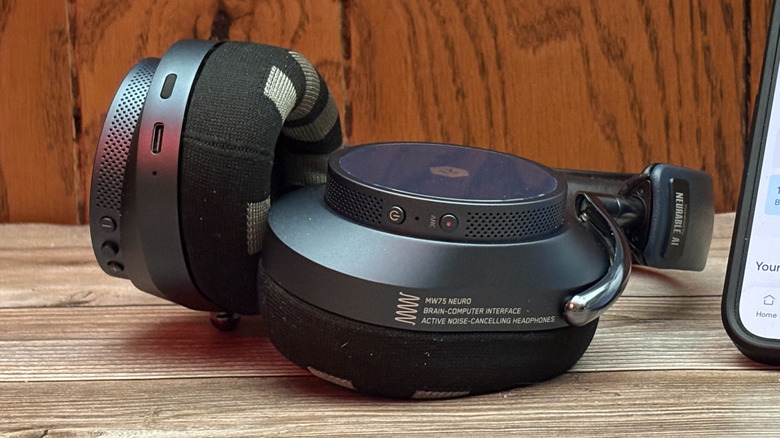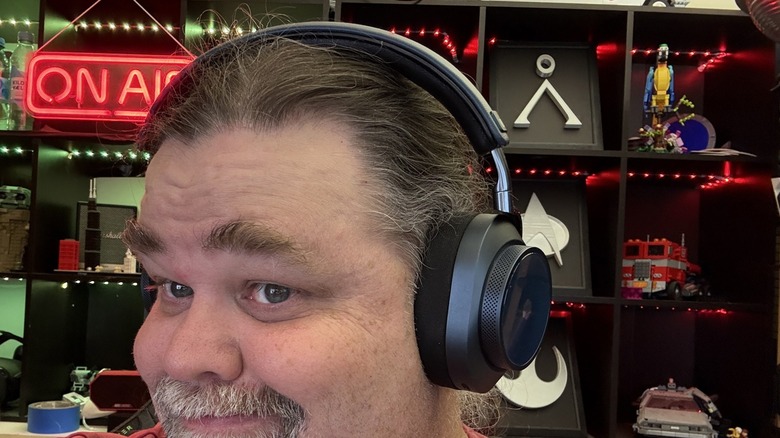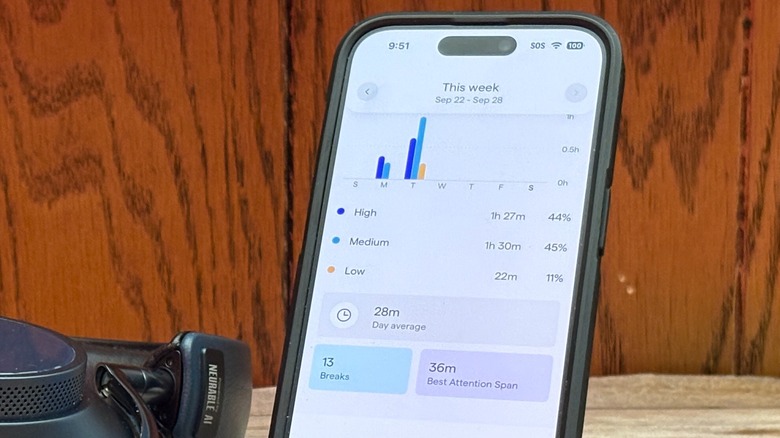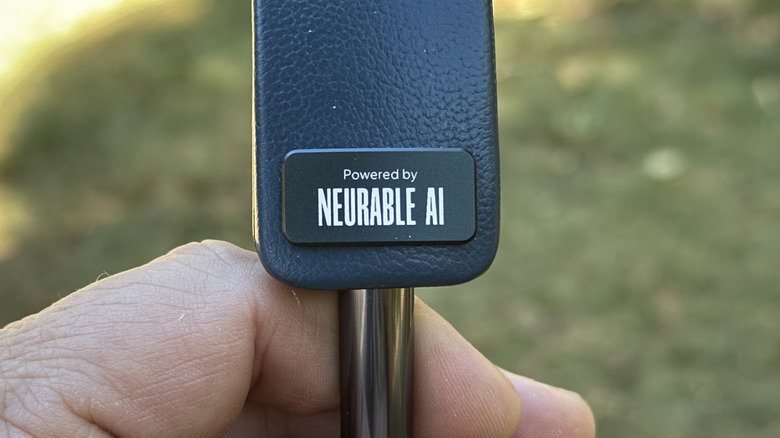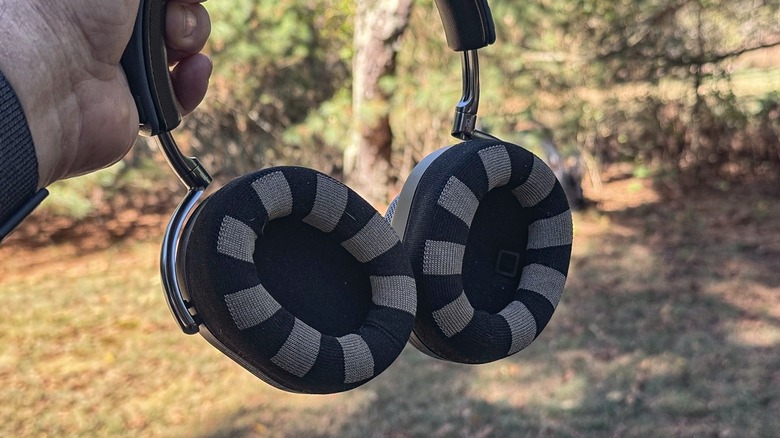Master & Dynamic MW75 Neuro Review: These Headphones Read Electrical Signals From Your Brain
- EEG sensor tech in earpads
- Gamification of focus
- Readable, actionable data
- Helps identify the problem
- Expensive
- Heavy
- Two apps needed
- Stops short of totally solving the problem
Focus is a fickle thing. You may be familiar with this scenario: You sit down to work, you toss on a set of headphones, and you start banging away at your keyboard. Minutes or hours later, your attention starts to wander. You open a new tab to look something up, but your news page feeds you a story about "Deadpool and Wolverine" and before you know it, it's 15 minutes later and what did you open that tab for again?
Focus can be tricky, but how can you go about fixing your ability to focus? The first step to solving a problem is admitting you have one. The second step is defining it — when does your focus start to drift? Why does your focus start to drift? These can be difficult questions to answer without the proper equipment. Unfortunately, the proper equipment has always been confined to a lab with nerds walking around in white coats — that is, until today.
Neurable is a startup dedicated to bringing tools to monitor your brain outside of the lab and onto your head. What goes on your head the most these days? Your headphones. So Neurable worked with Master and Dynamic to develop a set of headphones with Electroencephalography (EEG) sensor tech built right into the earcups — and they've sent me a pair for this review. I've been testing those headphones for the past two weeks, and this is my full review.
Why headphones?
You might be wondering why it's important that you buy a set of headphones that can tell you how your brain is feeling. Of course, the first answer is because it's really freaking cool. These headphones can essentially replace a skull cap with dozens of electrodes popping out of it. According to Neurable, you get a majority of the signal you would get from one of those Egon Spengler skull caps.
With these sensors, you can test your mental readiness and your mental fatigue. Your brain has no pain receptors, which means if you're feeling physically drained, there's a good chance your brain was drained hours before that. The Neurable interface can help users determine when a break might be necessary to help your brain focus better.
The headphones here are just the first step. Neurable believes in the future, we'll see even more devices like helmets and glasses with the same kinds of sensors that can help a user on a daily basis.
It doesn't stop at fatigue
What's most exciting is that Neurable believe that headphones like this can eventually become a sort of device interface. If you're feeling Elon Musk vibes, then you're leaning in the right direction — just without all the baggage. Down the road, Neurable hopes that devices like these can help diagnose and monitor a whole range of conditions. Some things the company hopes to be able to track include focus, PTSD, Neural efficiency, sleep stages, and a number of medical conditions. All of this is theory of course; today, Neurable is working on focus. We can talk about down the road stuff once we go down the road.
The important note here is that, unlike Neurolink, this doesn't require an implant into the brain — just an expensive set of headphones. So how do the headphones sound? Neurable picked a good partner in Master and Dynamic; that's for sure.
Headphone build
The headphones themselves are very large — you don't get that Bose or Sony vibe here. They're a bit chunky and heavy. They're comfortable enough to wear for an all-day session, but they start to wear on your after a while.
The headband is covered in lambskin leather, and most of the rest of the headphones is built from aluminum. You get tempered glass on each earcup, giving them a nice smooth premium feel. The fabric earcups are striped black and silver. The silver color is the EEG coils that do the brain reading — that pairs with the Brain-Computer Interface (BCI) to process your brainwave data (which we'll get to in a moment).
There are buttons around the circumference of both earcups for power, ANC, volume up and down the multifunction button. One problem is that all of these buttons are basically the same size, so you have to really know the layout of where they are, and which button does what. Otherwise, it can be easy to look for the ANC button and accidentally turn the headphones off. Overall, these headphones are attractive, but as mentioned earlier, they're a bit on the heavy side. The lambskin on the headband keeps them from getting too uncomfortable.
Two apps
In order for the MW75 Neuro headphones to function, you need to download and install the Neurable app. That connects to the headphones, allows you to start and stop your focus sessions, and tracks your data over time. You will also need to download and install the Master and Dynamic app in order to adjust the headphone settings, such as equalization, and the like. As of the writing of this review, the Master and Dynamic app has not be updated to detect the MW75 Neuro headphones, which are still in preorder status.
It's not awesome that you need to install two apps to get the most out of these headphones. I can see why it's necessary, but that doesn't make it easier to swallow. Put simply, this is the only product of Master and Dynamic that can read your brainwaves, so it doesn't make sense to build that functionality into its app, and on Neurable's side, putting audio functions into the app doesn't make a lot of sense either.
You need to start and stop focus sessions manually and deliberately. There is no "focus detection" or anything like that, which to me feels like a miss. To be perfectly honest, I just want to toss on a pair of headphones and go. I don't want to have to launch an app, start a session, and then move into something else. This is the definition of "you have one job to do."
Sound quality
The great news is that, even at default settings, these headphones sound quite good. Master and Dynamic has been in the founds game a long time — Neurable picked a good partner here. You get a nice balanced sound profile from the low end all the way to the high end. ANC is also here and also quite good. The earcups isolate a lot of noise already, and ANC comes in to finish the job.
When you switch to transparency mode, you don't get a lot of side tone, which is the sensation of hearing your own voice reflected back to you when you speak while wearing headphones. Side tone can often kill a good transparency experience, so it's great that these headphones nail that.
When the Master and Dynamic app can detect the headphones, you'll be able to configure them further, but for now, you'll be stuck with the default sound.
Does it actually help your focus?
So, here's the big question — do the headphones actually help? That's difficult to answer for a few different reasons. First, I only worked with these headphones for a couple of weeks. While I was testing them, I was also working primarily on a laptop which has a single screen, rather than the three-screen setup I have in my home office. That helped a lot with focus as well.
The Neurable app basically gamifies your focus and condenses it into a number which you can see on a graph. The higher the number, the better your focus. Neurable then records your focus session and awards points for how well you focused, which gives you an idea as to how things went. It shows you how long you were in high focus, medium focus and low focus, and how long your attention spans were. For example, while I wrote this review, my best attention span was nine minutes long. I had two of those along with several five-minute attention spans. If I'm being honest with myself, that sounds about right.
You can look over your stats for each individual session or look at your week and see your averages. The big question is, what do you do with this data?
Over time, you should start to see trends. Slept poorly? That'll probably show up in your focus metrics. Working at a coffee shop? That will probably show up too. There isn't much guidance beyond that though. It's going to be up to you to pay attention to what seems to be working and try to replicate those patterns.
What's coming?
Based on my talk with Neurable's CEO, there's a lot of potential here. But we don't review products based on what they might do tomorrow; we judge them based on what they do when they arrive in our hands. As they exist right now, the Master and Dynamic MW75 Neuro headphones are neat with a healthy dose of intriguing. But is that enough to get you to fork over a lot of dinero? I'm not convinced yet, but Neurable is definitely a company I'll be keeping an eye on.
You can stroll down the aisles of trade shows like CES and see a lot of companies making bold claims about what their products will one day be doing. So far, this is one of the only products I've heard of that meets several criteria.
First, these headphones actually exist and are being sold to actual people. This isn't a Kickstarter that is just as likely to end up as vaporware. Second, these headphones work as advertised. I can see my attention span gamified before my eyes.
Finally, and this is the most important, Neurable has realistic goals. This is not a company that wants to put a chip in your brain so you can summon your Tesla from across the city by thinking about it. Neurable doesn't make any eye-rolling claims about what this tech may one day do. It's grounded in science, and it's not reaching for some lofty ambition of curing all the world's ills.
Price, Availability, and Verdict
The MW75 Neuro headphones are available from Master and Dynamic's website on preorder as of the time of this writing. The website suggests delivery by the end of October 2024. The price is $699.
That's a lot, but considering what Neurable is bringing to the table, that's not a terrible price. Yes, they're more expensive than Apple's most expensive headphones, but they have potential down the line to be valuable to your workflow. Plus, they sound really great. The question you need to be asking is, do you want to be a beta tester and pay $700 for the privilege.
How much is your attention worth? That's ultimately the question you need to answer. I'm not saying these headphones will magically give you the focus of a Zen master, but they can help you identify what works for you. Down the road, they'll probably be able to do a lot more. We're not there yet, but I'm optimistic. For today, the price is high, but at the very least, you get a great set of headphones, and they can help you understand how your brain is working as you pound away at that keyboard.
